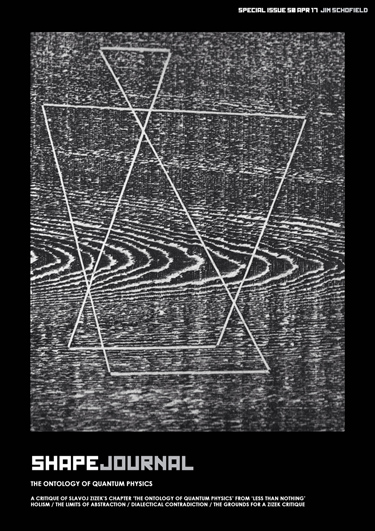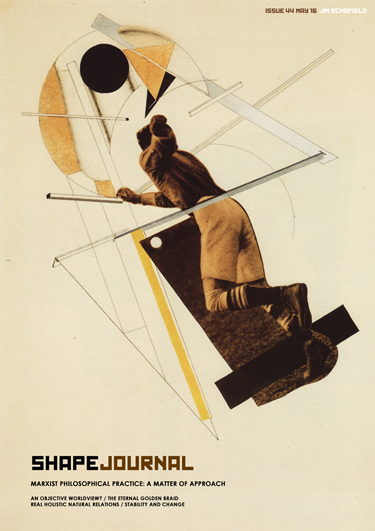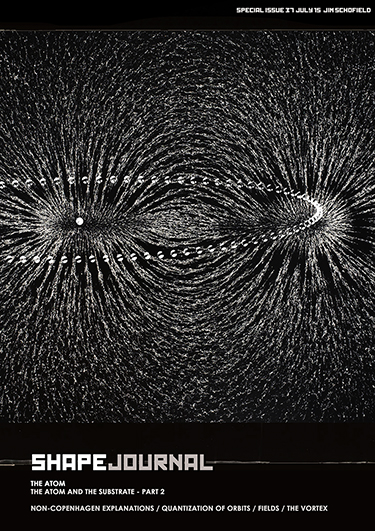What is it?
Let us consider an entity involved in some sort of process of change!
It could be either changing in its position (moving), or it could be changing its actual nature (transforming) into something else.
Now, we have to ask, “Is the former a meaningfully possible conception?”, for, it will surely depend upon what it is moving with respect to, whether something other than itself, or even some substrate through which it is moving? And, in addition, we have to deal with the apparent fact that absolutely everything is always moving, so to isolate an apparent stationary state, or any particular relative movement cannot be the full revelation of its movement anyway.
And, of course, any variation in distance from something else will vary the effect that our object will have upon it and vice versa, so even separating out movement is leaving aside such changing interrelationships.
So clearly, apart from totally internally caused changes within our entity, all others will be indissolubly linked with relative positions to other affecting things.
Yet, it is clear, all our conceptions of a thing always actually extract it from its real, full context, and, by doing so, remove it from what makes it what it is. Hence, by defining it in that way, we are turning it into an
eternal something, identified only by its then appearance and what we decide to
call it! Can we do that without distorting it in a fundamental way?
Of course, not! When something is removed entirely from its real context, what is there left to determine it? Most certainly, there are its inter-relationships, and hence also its properties too. So, in even conceiving of such a totally isolated state, we can only talk about its appearance, if subject to absolutely no effects outside of itself.
Now, such an approach would appear to be impossible, or at best “ideal”.
The conception of something, independent of all external affecting factors, can only deliver an
idealisation of the thing! For, in ignoring those causations, we are making it eternal, or, as-it-is-now, for we will never be in a position to predict all future forms. And, this will also be of NO value when it comes to it having any relations with anything else.
So, let us suppose, therefore that as a first approximation, we can isolate it in this way. If we could, what exactly would we have? Surely, only its appearance to us by whatever means we have to observe it? And, what will have given it that appearance?
There will be only those things still within it (and, of course, its now unavailable history). If considering it without any recourse to these will only allow a
Naming and
Describing, in order to recognise it when we see it again, and nothing more. We certainly don’t by any means understand it!
NOTE: This sounds very much like the patterns we discern in its appearance by our means of observing it, and nothing more! And it is these forms and patterns, that we measure and relate in scientific experiments, where we assume that we have removed all external distorting influences, and are getting only what we can from it alone. The easiest of such measureables is surely Position.
And we measure this “ideally” with reference to some totally inert, non-affecting reference frame (which by definition cannot change it in any way at all). This was Newton’s method!
Now, the relation of a series of positions with respect to different times (another absolute reference system) gives us a relation, and it is possible that an Equation might be found to fit those data. But, in such, could there be any explanation of why it moved in that way? Of course not: it could be any number of things that caused it to follow that path. The equation can only be a description of the result of it being moved – an answer to “How?”, but certainly not to “Why?” And when we do so, and infer that there is a cause of the movement completely defined by the equation alone, it has to be total nonsense! Forms, which occur in innumerable contexts, cannot possibly ever deliver explanations, only the differently caused recurrences of universal formal patterns.
Now, we know that things appear to be totally unchanging for long periods, and therefore can as a first approximation, assume that they are constant. We also know that interludes of significant qualitative change are bound to occur – Emergences, when the thing will become, at first a whole series of intermediaries, until a new stability is finally established, when our thing will have become something else, which will then seem to be entirely constant once more!
So, though we might get away with, during periods of stability, a conception of any one thing being constant (or even eternal), it will not be the truth!
For, to get to the inevitable transforming period, things must have been getting slowly to a position where the constancy of many things is being undermined, so that the nature of the given entity, along with many others, will be rapidly coming into question.
Surely, the nearest thing to getting an accurate generally applicable conception of the thing must be when it is visibly changing, for only then are the things that are changing it revealed.
Yet, we insist in treating it in the very opposite way, and characterising it when it is temporarily constant. In doing this we are ignoring all the significantly contributing factors that are involved, and which will, at some point, change it into something else!
Indeed, we could use that characterisation generally, but have the details swamped by one or another dominance, that for a time will hide the many still present processes that continue to be present, and give once more the illusion of permanence to its current appearance.
Indeed, only careful analysis, moment-by-moment, during an emergent interlude, will reveal a host of affecting factors with each and every temporary mix, resolving into one temporary dominance after another. And, such a tumultuous sequence, will, in the end, have exposed a whole series of affecting factors, which can, and do, affect our entity, but varying in dominance in the differing sequence of contexts. And this set will even be true during its time as an apparently constant thing, during each period of stability.
Now, the observant reader will have noticed a set of assumptions, by the writer, as to “things-in-general” and “over time”, and that is indeed true! No matter what we do, we will always bring to our observations such basic assumptions. But, they are not the usual ones assumed by the majority of the human population. They are the assumptions extracted from a host of experiences, which have concentrated upon qualitative changes, and not, as is usually the case, assumed constant or even eternal factors!
And, it must also be admitted, that the most important generalisation has been the realisation of unavoidable alternate periods of Stability and Significant Change (Emergences) that characterise all development. And in these periods of change – the Emergent Episodes, there always arises the absolutely New.
Now, the key template Emergence, to be used as a general model for these episodes, has to be the Origin of Life on Earth, but there are innumerable others in the history of the Cosmos, all the way from the supposed Big Bang to the Emergence of currently living entities today.
Now, it was useless characterising something entirely from its apparently eternal features during some period of stability, and instead finding what constituted it during an Emergent Event would certainly be considerably better, but we will still have been totally unable to include what has emerged as totally new, within that complex transformation.
So, several questions are bound to arise!
Can we determine such brand new features, by studying the situation before the changes occurred?
The answer to this can only be, “No!” There will always be absolutely no trace of it prior to the transformation that produced it!
Can we, alternatively, therefore, study the situation, after the change, and trace our identified new factor back to its actual moment of birth?
Sadly, the answer to this will also be, “No!” And this is because the nature of such an origin is never a simple, linear causal sequence. On the contrary, it is the result of a complex, holistic mix that hasn’t exactly as such ever have occurred before, and a whole trajectory of changes delivering a myriad of temporary phases, all happening simultaneously and affecting each other, until some sort of final emergence of a new stability, containing these new features finally come to be.
Once again, the only place to have any chance of finding and studying the trajectories, which led to these new features, will be within the Emergence itself!
Now that, I am sure you will agree, is well nigh impossible! For, in almost all of these episodes, the process has already finished, before we discern its revolutionary new contents. How could we possibly investigate such things?
Well, surprisingly, there have been such interludes that were so investigated, though they happened at the Social level of organised matter: they were, in fact, Social Revolutions – particularly that which occurred in Russia. For there, the main revolutionary faction of the Russian Social Democratic Party was a Marxist organisation, and had this standpoint as the ground and method for understanding what was happening in the midst of revolutionary changes.
Now, these are not common occurrences, and when they do, the chances of there being an organisation involved capable of addressing these crucial questions would be extremely unlikely – especially as those current parties that profess such a standpoint have, in fact, long since abandoned it.
And, of course, such experiences are only very indirectly applicable in other areas of study.
The question of what to do in all these very different areas is what we have also to address. How can we investigate such Emergent Episodes?
Well, we have to actually construct a mini Emergence, and study that! And there are scientists who have attempted to do it.
Perhaps the most significant was Stanley Miller, in the experiment he devised and constructed based upon the known contents of the primaeval Atmosphere of the early Earth.
For, he was successful in his attempt, and at the end of only one week, he was able to show that amino acids had been produced, some of the most important building bricks of Life. Now admittedly, he couldn’t take his experiment further, nor could he reveal a single process that had occurred within his system. He could not penetrate his apparatus without destroying its natural systems. But, we can do this now!
This author has already re-designed a new version of Miller’s Experiment, but with defined physical paths for the movements of the substances involved to follow, and with time-based analytic tools positioned throughout. With such a set up, it would be possible to begin to disentangle the various active processes taking place and their sequences, and to do it for several simultaneous strands too – all related to a master timing system.
And, such experiments are not the only possible forms for Holistic Science.
Yves Couder decided to move the phenomena that continue to cause chaos in Physics from their Sub Atomic level with all its inherent difficulties, into a possible analogous situation at the macro level, where analogous phenomena could be much more easily investigated. His artificially conceived-of set up was of course nothing like that at the micro level, but he reasoned that such situations must involve the interactions of various different oscillations, involving both resonances and recursions. So, he constructed a surprising set up for his investigations. He started with a basis for his required structures, which was a shallow tray of silicone oil constantly subject to a given vertical vibration. He then released a drop of the same liquid onto the surface of this vibrating substrate. Of course, it was merely absorbed in the substrate. Yet, by varying the few parameters under his control, he managed to get the drop to not only cause a wave in that substrate but also bounce upwards again. Now, the upwards moving drop slowed down under gravity, until it reached zero velocity and began to fall again, to again to once more come into contact with the substrate. But, again merely by the available adjustments he found he could ensure that it not only bounced again, but would thereafter continue to bounce by always coming into contact with the substrate wave coming up. Such a permanent, continually repeating cycle could only be achieved by getting the required energy from the forced vibration of the whole substrate, and causing recursively a forced oscillation of the drop too. A Local Zone of the surface of the substrate had become a kind of standing wave, and the system of drop and standing wave (termed a “walker”) could move about across the surface of the substrate, and several phenomena that were similar to those at the sub atomic level were made to occur.
This was a remarkable kind of experiment.
It based itself on analogies and purposive constructions in the most amenable of areas, to attempt to reveal comparable situations to other currently impenetratable phenomena at the sub atomic level. What could be extracted from Couder’s experiments were indeed remarkable.
But, clearly the efforts of Darwin, Miller and Couder are merely the very first steps in developing a new approach to Science, which no longer insists upon both stability and total control to reveal “essences of Reality”, but purposely attempts to ride the tiger, and investigate Emergent Episodes as delivering the real truths about Reality.






























